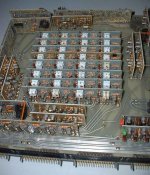Homunculus
Member
This is a part of my Kienzle 6000 minicomputer.
The computer has two of these modules, connected to the part "MPS Steuerung" (MPS Control)
These are called "Speicherplatte", which means storage plate, but the computer has normal core memory.
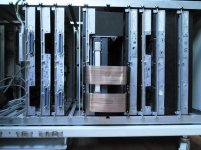
It doesn't look too interesting on the outside:
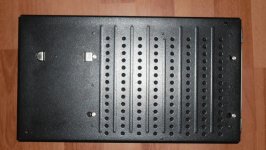
But in the inside there is only some U shaped ferrites:
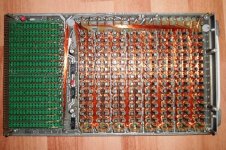
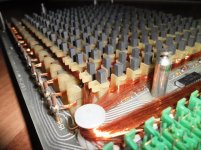
Each ferrite has a spring on the other side, and the removable top holds an other piece of ferrite over every ferrite, so when assembled, they look like an O.
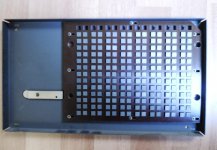
Core memory store one bit in every ferrite core, but if this uses the same principle, then the capacity is way too low for even 1970 standards.
Anyone has seen something like this?
The computer has two of these modules, connected to the part "MPS Steuerung" (MPS Control)
These are called "Speicherplatte", which means storage plate, but the computer has normal core memory.

It doesn't look too interesting on the outside:

But in the inside there is only some U shaped ferrites:


Each ferrite has a spring on the other side, and the removable top holds an other piece of ferrite over every ferrite, so when assembled, they look like an O.

Core memory store one bit in every ferrite core, but if this uses the same principle, then the capacity is way too low for even 1970 standards.
Anyone has seen something like this?

